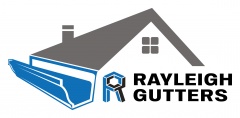Visit Publisher Site
Contextual Architecture
(0 Reviews)
Contextual Architecture
As a property entrepreneur, have you ever thought about buying a patch of Green Belt land to build your own house or to construct homes for property investment? Or like many landowners, have you ever thought about building your dream home in the countryside? Imagine what it would be like to get planning permission for Green Belt land. Architects with experience of working on green belt properties incorporate the latest trends in sustainable design to create green building designs with a focus on functionality and aesthetics. A green belt architect minimises their environmental impact by careful use of business resources and minimising waste. They have a track record of business success and client development, based on outstanding results for clients and high levels of client satisfaction. A green belt architectural team provides a professional and bespoke architectural service specifically tailored to the requirements of their clients across the UK. Each new building is designed to reflect high architectural aspirations having regard to the individual design brief of the client and the context of the site. A sustainably designed building is also one that complements and supports surrounding ecosystems, rather than damaging them. This might include features like ‘living walls’ and roof gardens that provide flowers for pollinators. An understanding of the challenges met by New Forest National Park Planning enhances the value of a project.
The NPPF states that inappropriate development is harmful to the Green Belt. Applicants would need to demonstrate ‘very special circumstances’ to justify new tourist accommodation the Green Belt to clearly outweigh the harm to the Green Belt and any other harm. The important thing for green belt architects is to design a building to suit its location, not to use a misplaced perception of what a traditional building might be. An authentic modern building will have the spirit of a historic building with all the home comforts, materials, and textures but will be built to benefit from technologies that we have today. Green belt planners and architects work closely together to ensure planning permission is granted. The project design can then be tweaked and developed as ideas evolve. The majority of their planners have previously worked as senior planning officers for a number of local authorities. They understand how the planning system works in practice which is why they have such a high success rate. An experienced green belt architect team can offer the full range of planning services and have usually built strong relationships with local councils and industry specialists to ensure the best chances of success for their clients' proposals. People deserve countryside on their doorstep where agriculture is less intensive, where there is space for nature that everyone can explore and enjoy and which is accessible to all. Green Belts have a crucial role in enhancing the sustainability of our cities. Local characteristics and site contex about Architect London helps maximise success for developers.
Collaborative Approaches
Many of the changes people tend to want to make to their homes, such as extensions, external changes or even knocking down and replacing a building are exceptions to the anti-development bent of Green Belt policy, and are often acceptable to local councils. Professional planning consultants understand what the Planning Inspectorate expects to see to help them make the right decision. As with every part of the planning process, it's best to do your research and get advice from the local authority if you're unsure about what you can do. Sustainable building solutions range from a focus on retrofit, the adoption of circular economy principles, decarbonising the grid, reducing embodied carbon in buildings, bringing down operational carbon to net zero, and increasing green infrastructure. Sustainability is a comprehensive concept that is linked to a building’s congregated ability to provide a healthy, comfortable, and productive habitat without negatively impacting the environment whilst considering the state of future generations. The green belt polarises debate into two camps: those that argue for it to remain untouched and those who argue for its partial or total release for development. This makes any debate on the Green Belt both politically contentious and somewhat sterile. Clever design involving Green Belt Planning Loopholes is like negotiating a maze.
Man’s strive for increased comfort and financial independence, the densification of congested urban areas, a strong increase in traffic levels and the growing electric smog problem due to new communication technologies all cause ever rising stress levels in the immediate vicinity of the individual. Our Green Belts help prevent urban sprawl, and protect our countryside from encroachment, but did you know they’re home to 19% of all traffic free cycle routes and 34% of Community Forest land? Green belt architecture staff always work together as a team, providing a holistic approach covering planning, design and technical input to ensure they produce the best possible outcomes for their clients. Contrary to myth, the only function of the green belt is to stop urban sprawl (cities growing into one another). Green belt land has no inherent ecological or agricultural value, nor is it chosen because it has natural beauty or protected wildlife. The government are working on improving access to public land records, allowing you to check certain restrictions on land. You should contact your local planning authority to find out if your land is in a green belt area, and any policies or restrictions that may apply as a result. Conducting viability appraisals with Green Belt Land is useful from the outset of a project.
Building Requirements
Infrastructure development (such as airports, motorways and electricity transmission and distribution lines) is a common feature in many areas of Green Belt. One of the largest and most controversial infrastructure proposals in England, a third runway at Heathrow Airport, would have a significant effect on Green Belt land if permitted, both in terms of the location of the runway itself and in the sourcing of construction material from extraction sites in other Green Belt locations. Architects that design for the green belt may specialise in designing buildings that have a low impact on the environment using both modern and traditional methods. Designers of homes for the green belt see a greater need for conserving resources and began developing new techniques like passive solar heating and smart grid technology. You can discover supplementary intel relating to Green Belt Architectural Consultants at this Wikipedia article.
Related Articles:
More Information With Regard To Architects Specialising In The Green Belt
More Background Insight On Green Belt Architectural Businesses
Further Information On Green Belt Consultants
Additional Insight About Green Belt Architectural Businesses
More Information With Regard To Architectural Designers
Additional Information With Regard To Green Belt Planning Loopholes
Further Information On Green Belt Architectural Businesses
↑
Posted on 08/04/23
 Gutter cleaning and repair company Essex
Gutter cleaning and repair company Essex
 Can a Psilocybin Mushroom Trip Really Help Ease Anxiety?
Can a Psilocybin Mushroom Trip Really Help Ease Anxiety?
 Visit Myfinal11 Website
Visit Myfinal11 Website